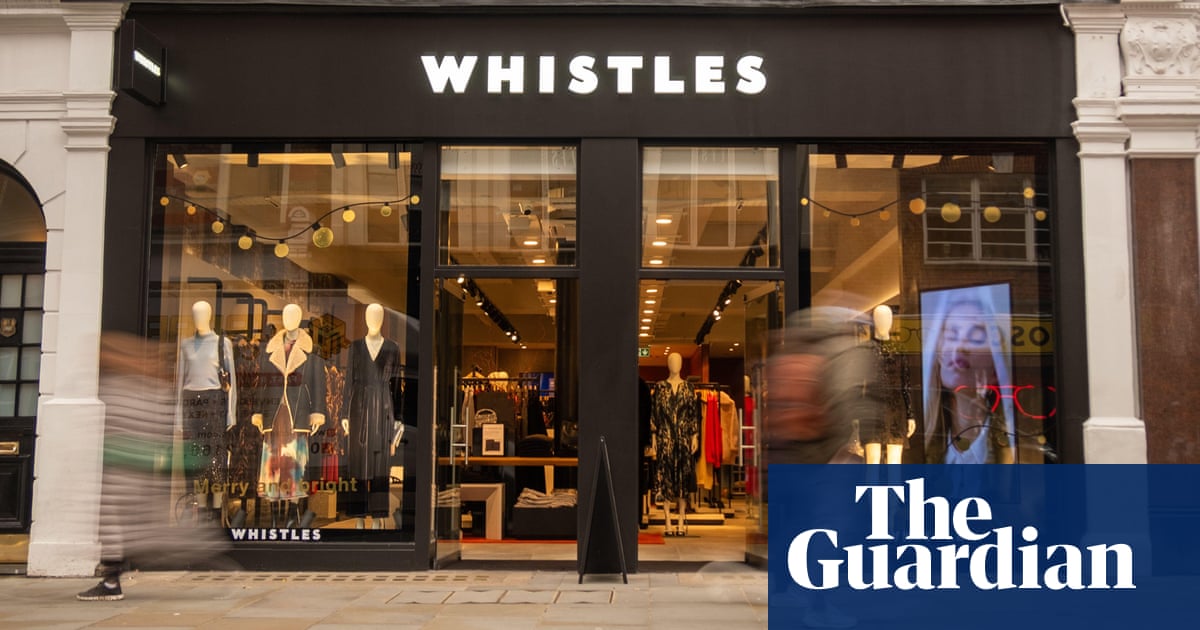The health of the British high street is a much-discussed topic in fashion. The latest secret weapon set to resuscitate the sector? A wave of female designers at much-loved brands.
Jacqui Markham, previously the design director at Topshop and Asos, was named the new creative director at Whistles last week. She joins Maddy Evans, promoted to director of womenswear at Marks & Spencer this year, and Clare Waight Keller, the former Givenchy designer who joinedUniqlolast year. Meanwhile, Cos, the fashion insiders’ current favourite, has had Karin Gustafsson at the design helm since the brand began in 2006.
All of these brands have seen a boost in recent years. That has been in part thanks to items that go viral. In theLyst hottest productsfor Q1 of 2025, an influential list of items fashionable consumers are searching for, Uniqlo’s £3.90 red socks and Cos’s £75 barrel leg trousers featured alongside designer items.
Whistles – and its parent company TFG, which acquired the brand in 2016 – will be hoping that Markham can be the magic bullet. The brand was founded in 1976 and had a golden era in the 2010s, under the stewardship of high-street whispererJane Shepherdson. But hype around the brand has quietened recently. “With the retail market so saturated, it is more important than ever for us to stand out,” says the product director, Camille Sullivan. “Jacqui will be key here.“
Sullivan says the “women designing for women” factor is powerful: “I believe our team’s lived experiences help us understand and relate to our customer and what she needs in her day to day life.” Catherine Shuttleworth, a retail consultant and the chief executive of Savvy Marketing, agrees: “Nobody knows how women think and behave and shop better than other women, in my opinion.”
No discussion of the high street now can happen without mentioning Topshop. The much-loved retailer (and its menswear arm Topman) closed its stores in 2021 after a buyout from Asos took it online.It announced it would be coming back to stores in Marchto an outpouring of nostalgia. The first move will be a pop-up later this month. Announced on social media this week, all slots to visit the store have sold out.
The team at the brand is mixed gender, with managing director Michelle Wilson, product director Deanna Iannello, head of design Steven Andrews and Moses Rashid, global marketing director. Wilson says this recruitment had been crucial. “We’re now in the position to operate as standalone brands, delivering great product, designed in London with our London lens,” she adds.
Joy Montgomery, the shopping editor at Vogue, says they need to be careful when it comes to the nostalgia factor. “I don’t think high street brands that have heritage can rely on that alone,” she says. “Look at the archives, but then what layer do you add on to that?”
Wilson says they are focusing on the spirit of the brand. “Topshop was always the go-to accessible fashion brand for cultural tastemakers,” she says. “It was about unlocking the best of fashion for everyone.”
Sign up toBusiness Today
Get set for the working day – we'll point you to all the business news and analysis you need every morning
after newsletter promotion
Meanwhile, Waight Keller’s switch from luxury to high street is revealing when it comes to job prospects for designers. In the past year or so, high fashion has beencalled outfor the lack of female talent in the top design jobs, with recent vacancies often going to men. The high street appointments shouldn’t be seen as solving the problem, however. “There is something to be said for having that diversity,” she says. “But there is a bit of a risk that you put all women into a box which is more utilitarian or for masses, and that can be dangerous.”
There are signs that silo-ing between high street and high fashion is over. Along with Waight Keller coming to Uniqlo, there has been movement the other way. Louise Trotter, who began her career at Whistles, was named creative director at Bottega Veneta in December, while Kate Phelan, who worked with Topshop, was named creative director of Harvey Nichols. Shuttleworth says this is down to a shift in thinking. “Good retailers are starting to look for [designers] in a much more interesting ways. High street brands come in and out of fashion so, to retain their place, they need fantastic talent.”
